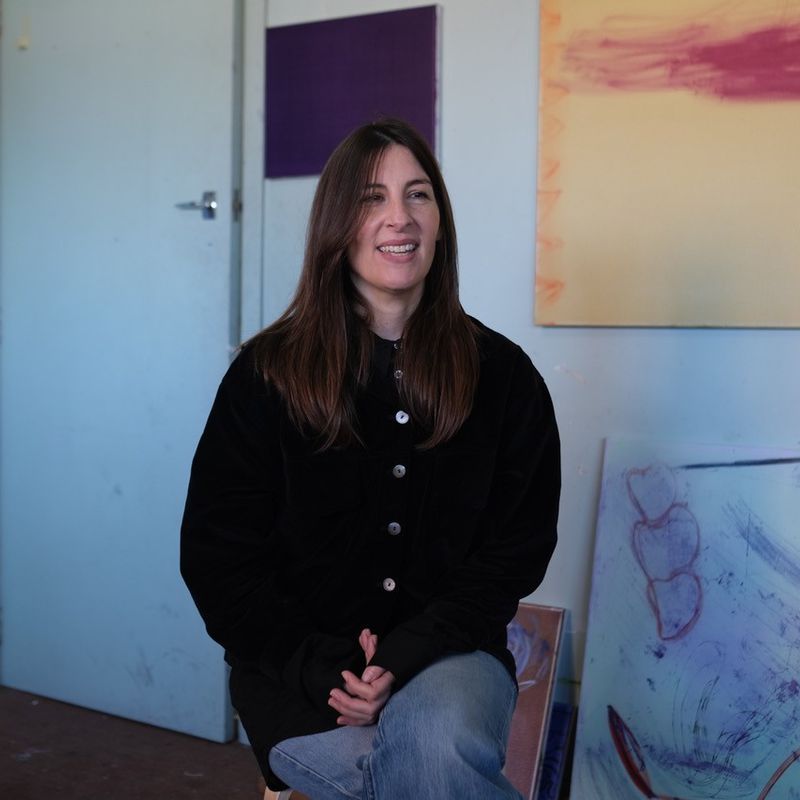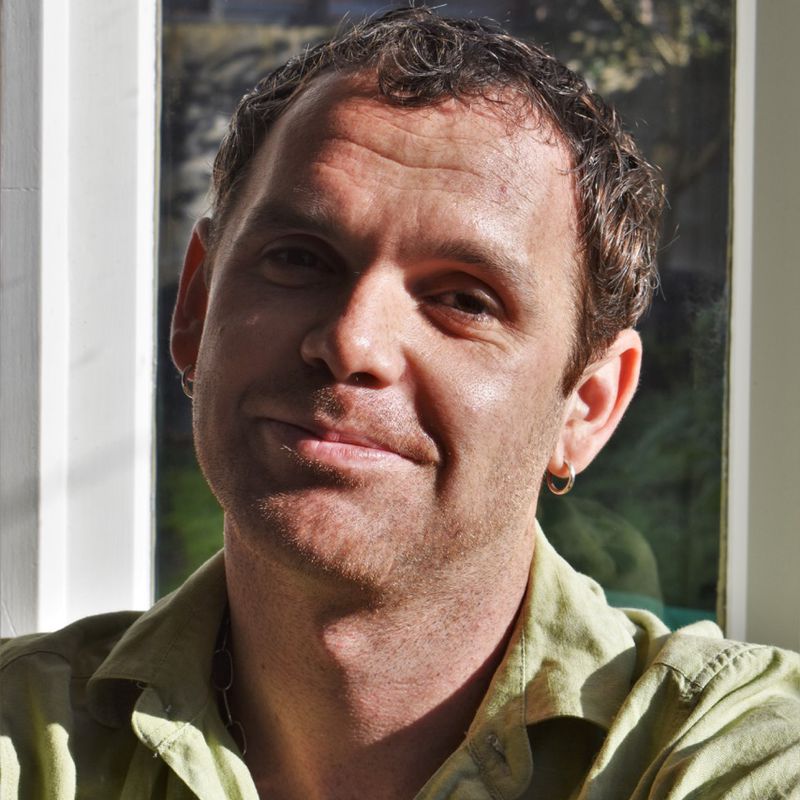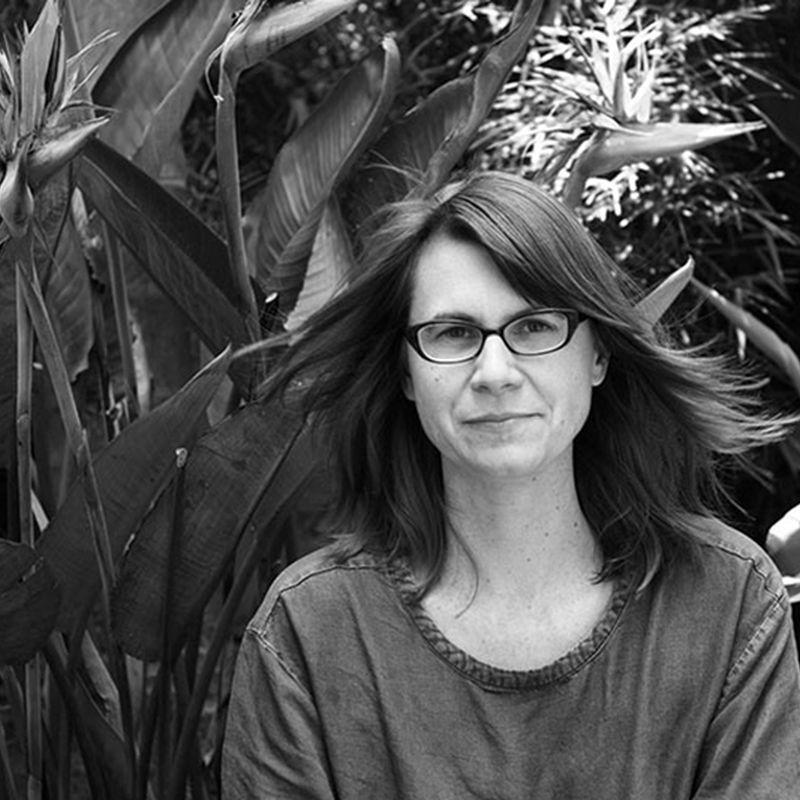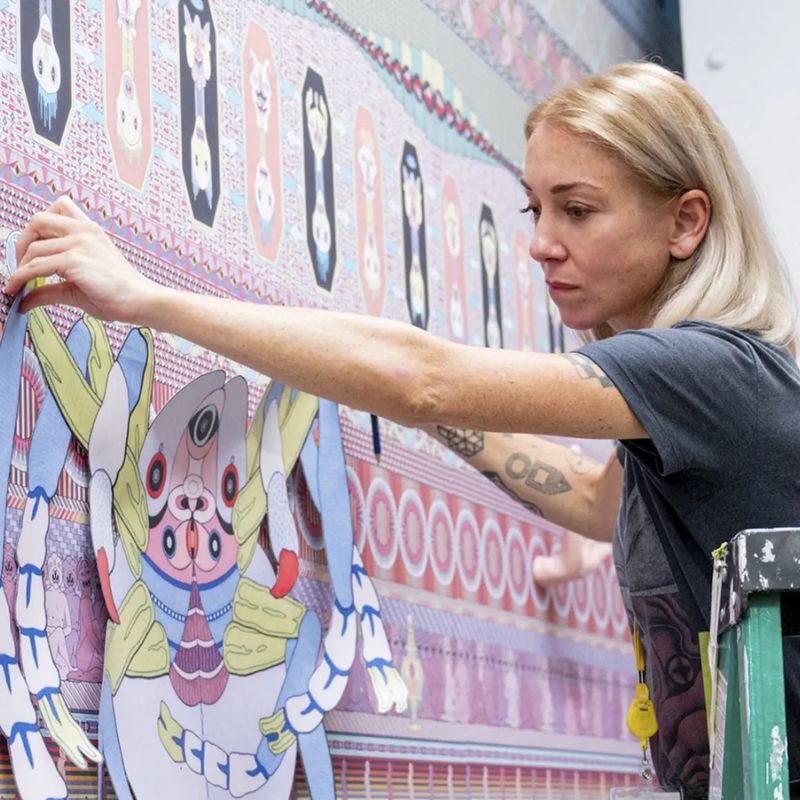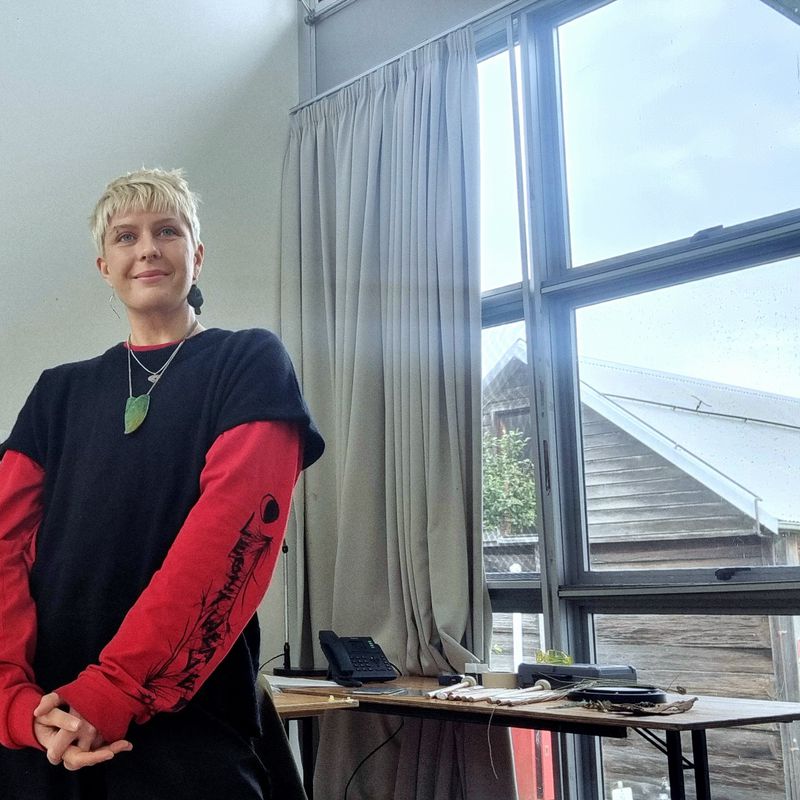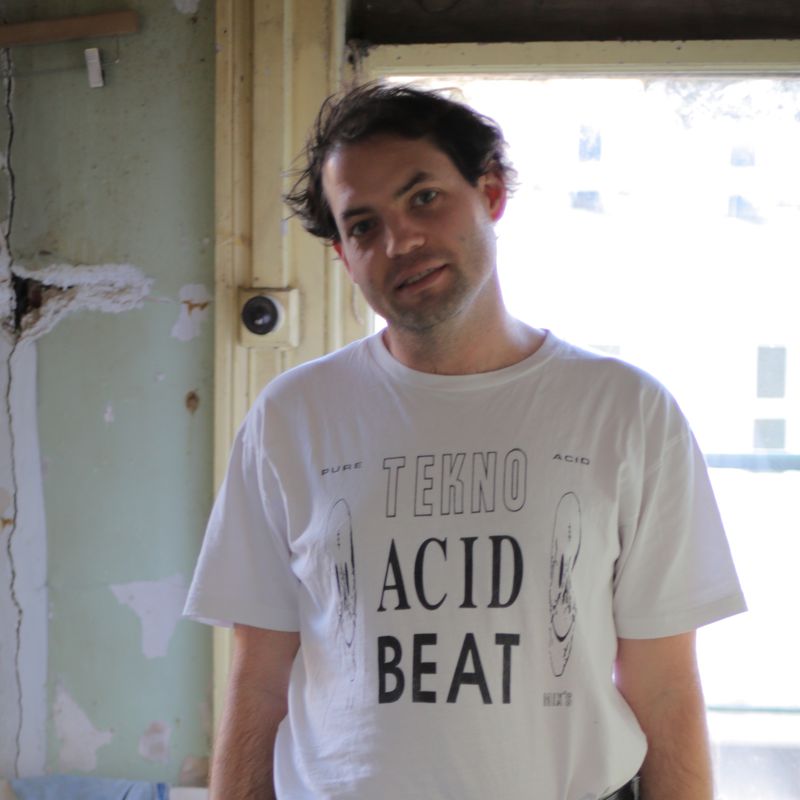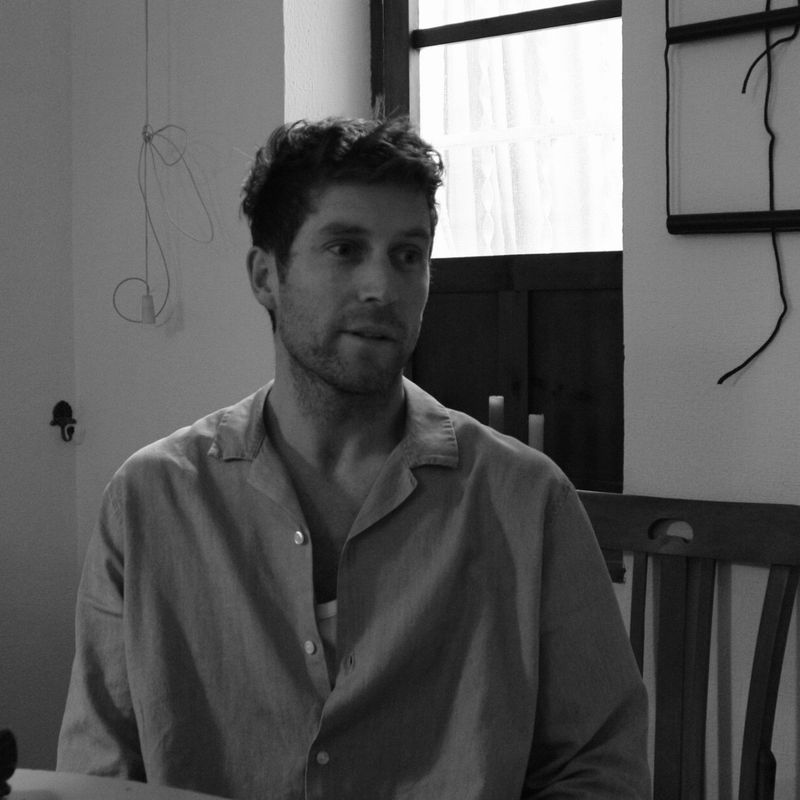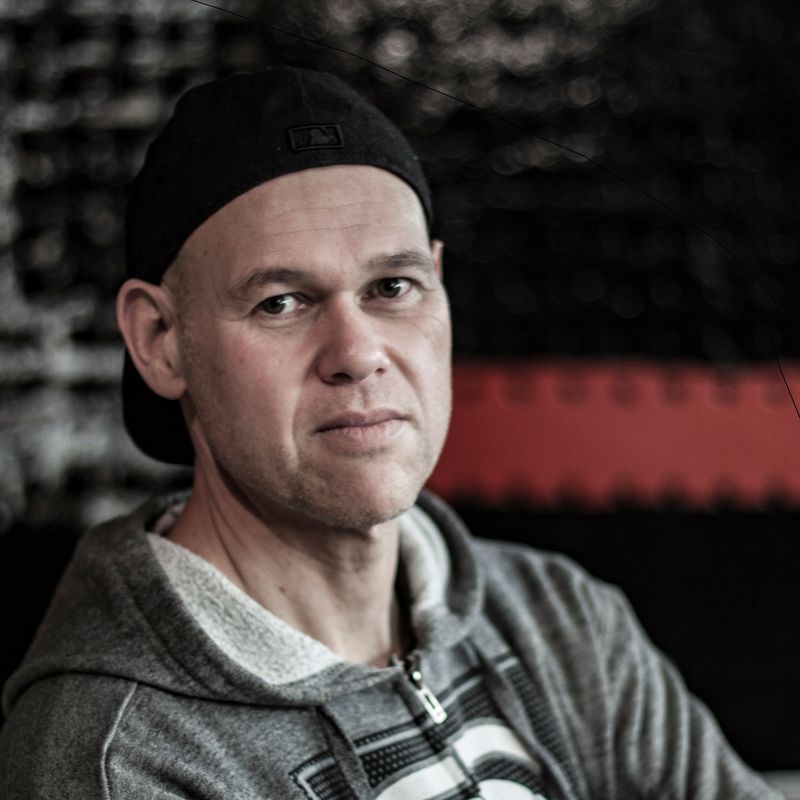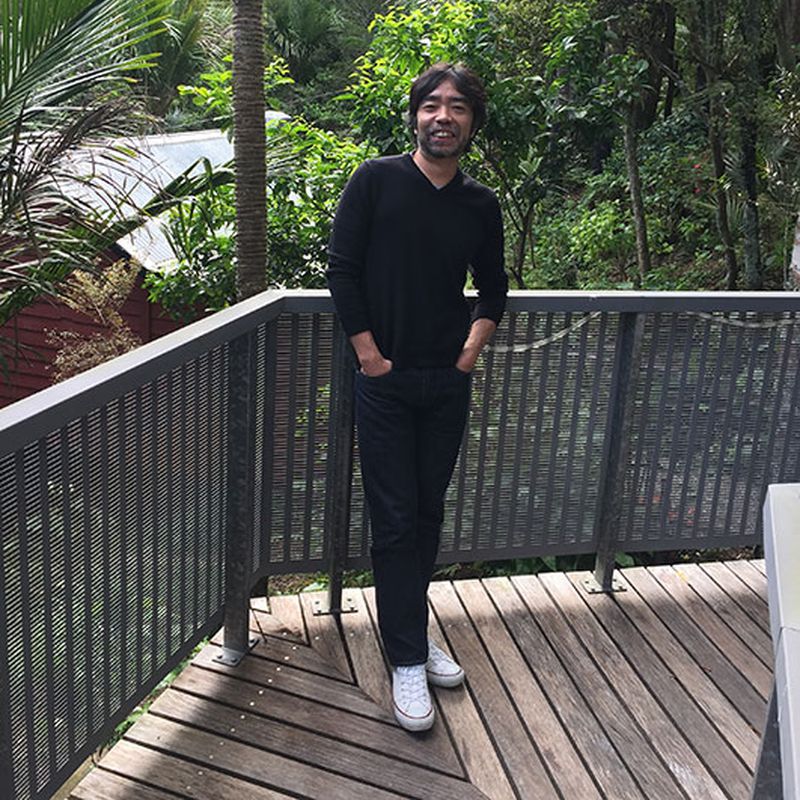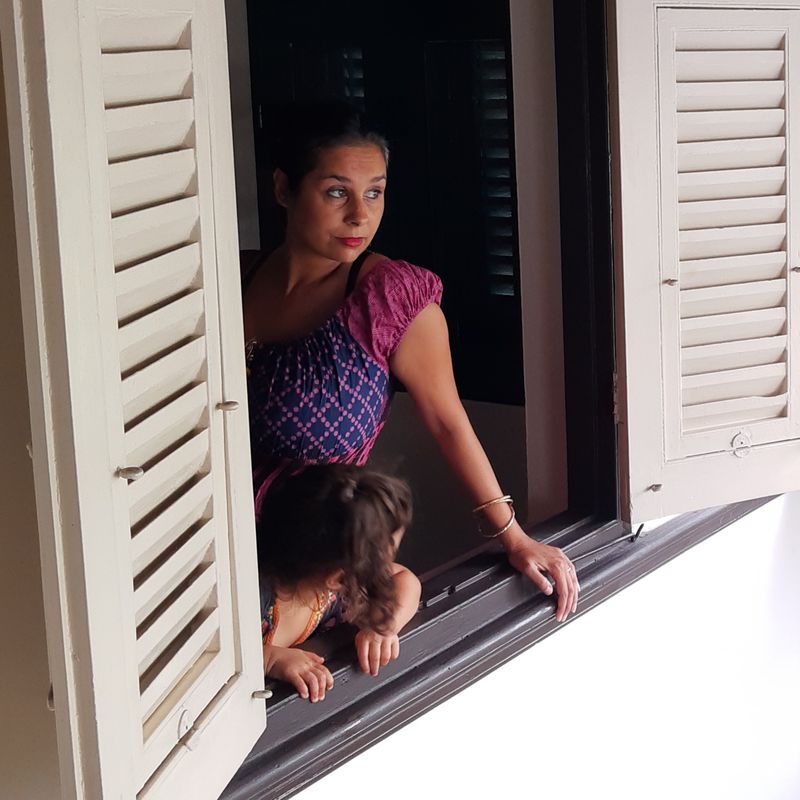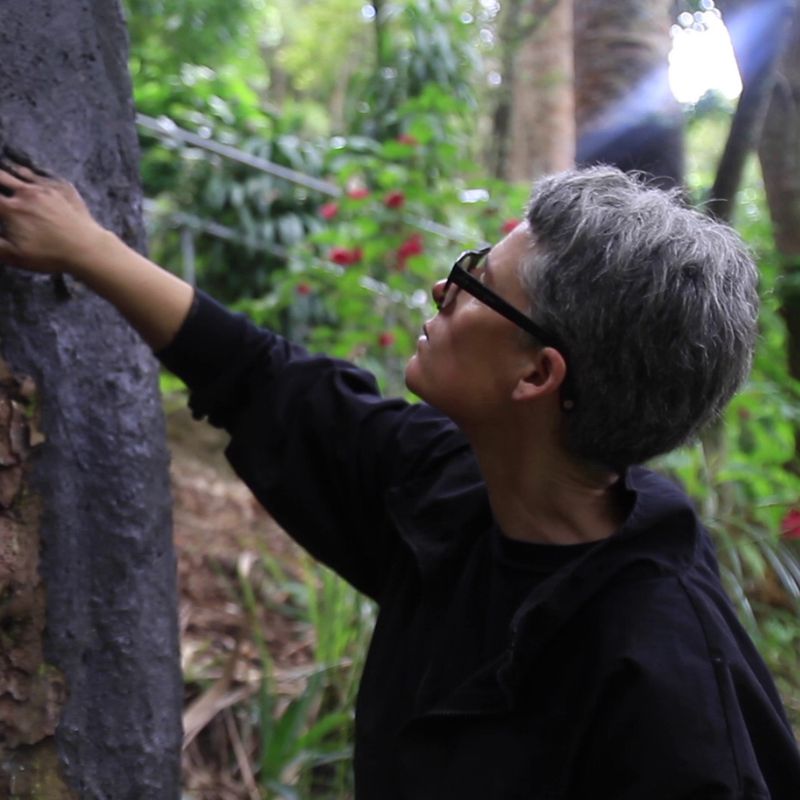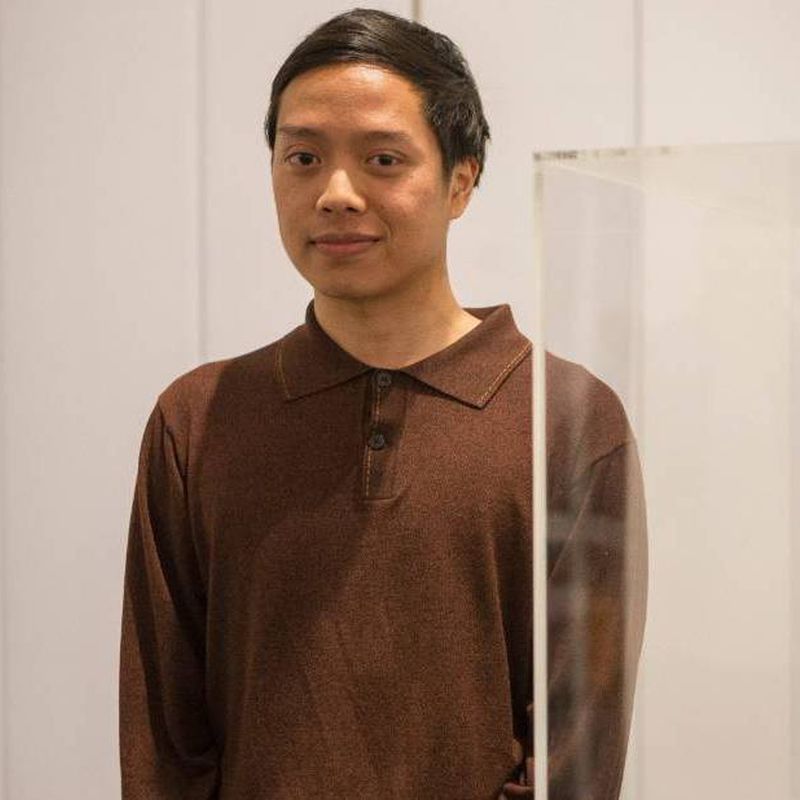ALUMNI WRITING
Writers on alumni artists of our residency programme
A
C
F
G
H
I
J
K
M
P
R
S
T
W
Y
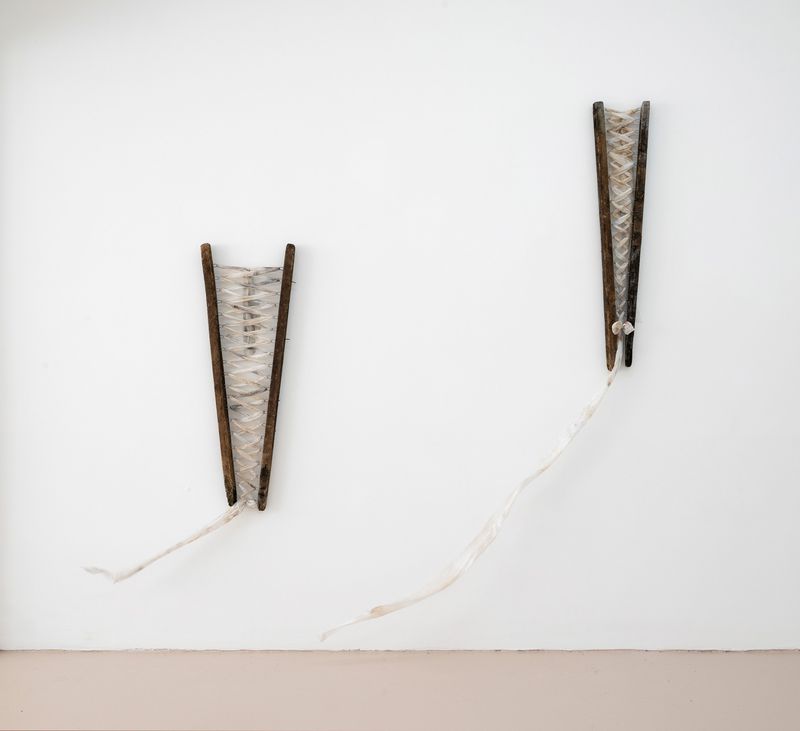
George Watson, The Farm, 2025
installation view: Coastal Signs, Auckland
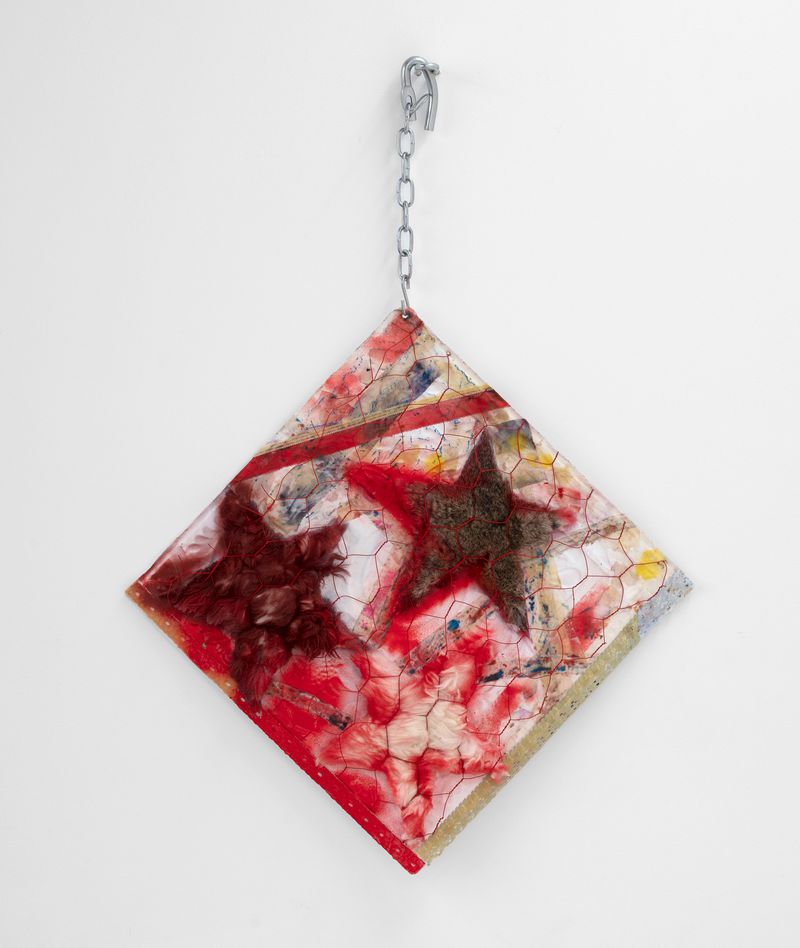
George Watson, Homeschooled, 2025
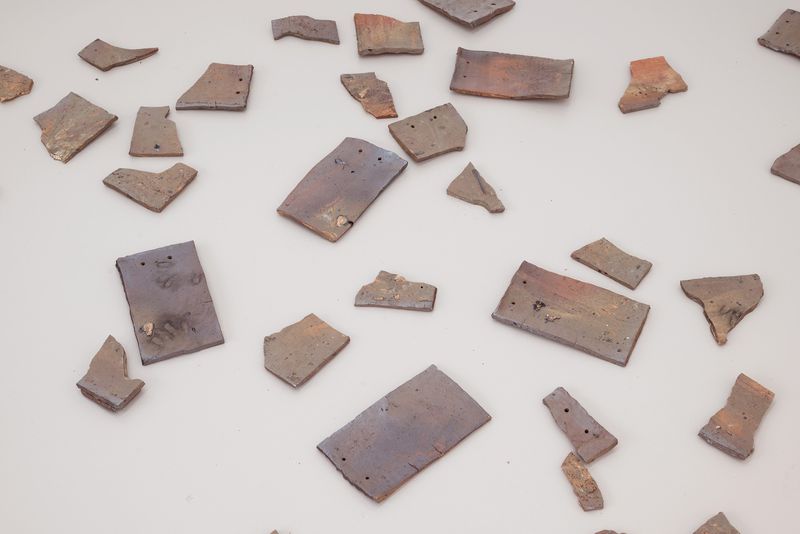
George Watson, Lapita Lolita (detail), 2025
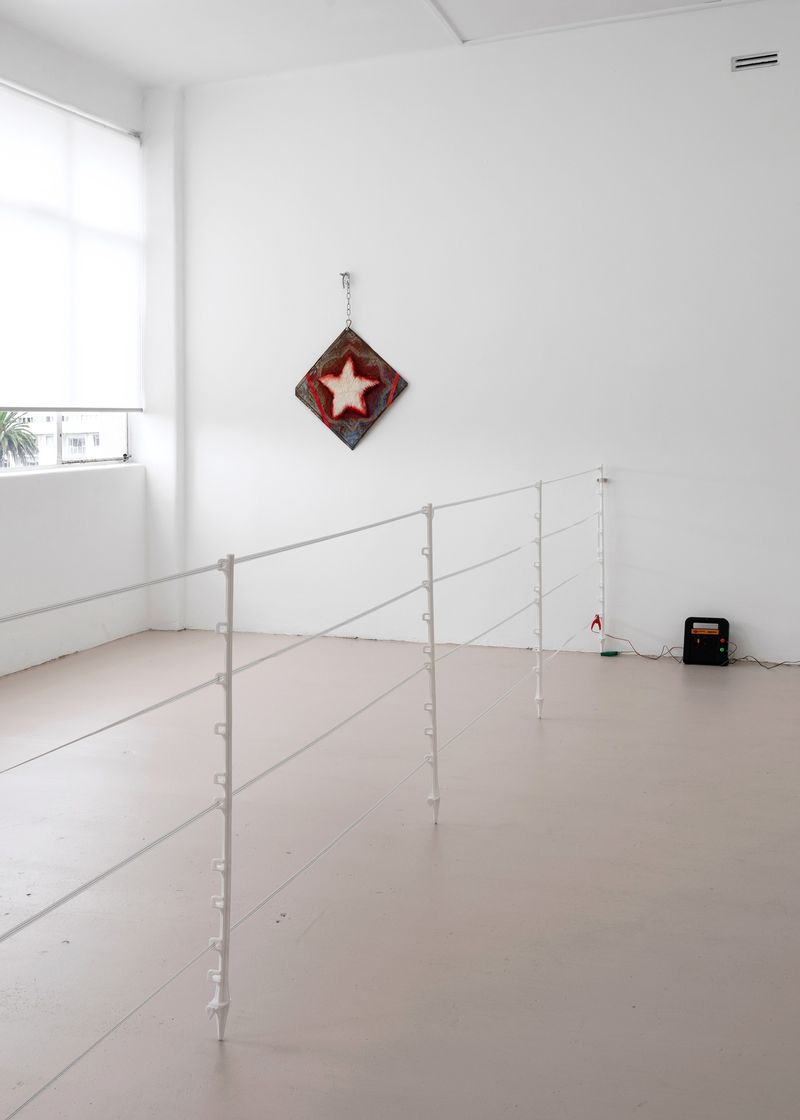
George Watson, The Farm, 2025
installation view, Coastal Signs, Auckland
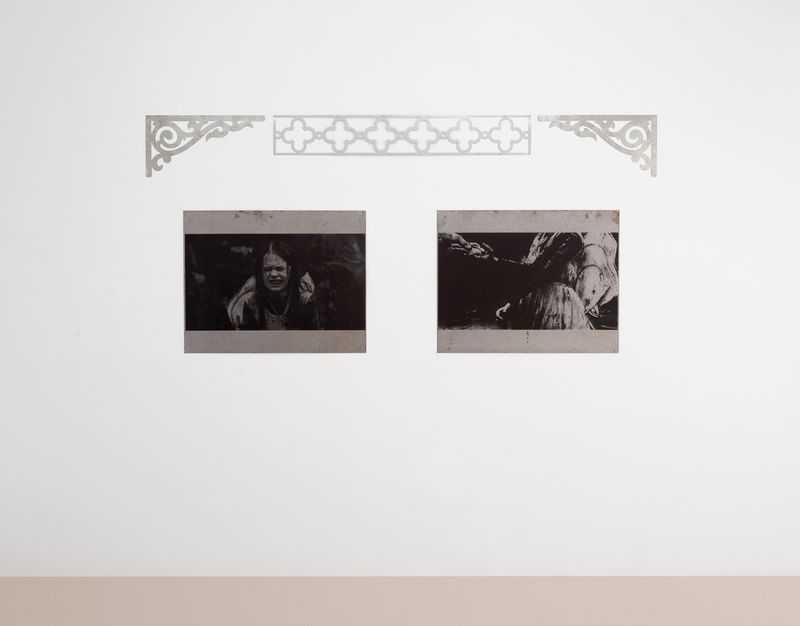
George Watson, Children of the West, 2024
installation view, Coastal Signs, Auckland
FIRST IMPRESSIONS
GALLERY FLOOR: A burnt peach, very pale. Fruiting. But also autumn. What looks like broken earth. Shards of pottery perhaps. The mud-brown of drying clay. Dry enough to shatter. To break.
GALLERY WALLS: Hanging tributes. To who? To what? Their materials give some clue. Animal fur in star shapes. Something about girlhood (Sofia Coppola’s Lick the Star). Outside the cities and suburbs where femininity is measured by servility and grace (and brat summers), girlhood cleaves to whatever’s around it. A freedom to dream under open sky, on bracken and earth. A girlhood that meets animality before it can learn the missives to shrink and hush, before it’s bullied into ill-fitting hairshirts. A girlhood boasting of nature’s grit. High on the wind-fluted pastoral of a meadow at dusk. Broken open not by the indoctrination of men—rather, brought to term by the theatres of sex and death that make up The Farm.
LATER IMPRESSIONS Artist George Watson’s shrine to Campion’s The Piano makes sense to anyone half-way committed to New Zealand. Whether by birth or adoption. That film lives in the dark feminine over here. That film ushered and continues ushering (like a doula) something rankly-fecundly lived which history otherwise ignores. The female perspective, yes. But more than that. Or, more than the filling of an historical absence. More than the phenomenological stopgap of a marginalized voice. Rather—The Piano is an obsidian crown whom many perished to make. Not unlike the native workers sacrificed for Werner Herzog’s Fitzcarraldo. Figuratively speaking, of course. Because unlike that production no one actually died in The Piano’s making. Not directly anyway. A period film, yes.
The ‘bodice ripper’—generic tantalizer for the bored housewife. Which is a dire sentence. Because wholly reductive of a) desire, and b) female desire. Worse. A disdain of popular ‘romantic’ forms, or romanticism tout court, does the double crime of conflating femaleness and unruly variants of desire, and in doing so denigrates both. Like womanhood was consummately sensitive to a primordial frequency that needs curtailing, lest its yawning hunger overtake millennia of civilization-building. Woman and hunger (sexual, but broadly corporeal) an ill, a stain, a glitch in the otherwise pristine rollout of The Efficient Society. Because efficiency—and the legibility of production—presupposes the rationality of its denizens. Homo economicus is a binarized agent of self-interest and personal gain. Desire’s essential formlessness (as messages from the deep) is only acceptable after being filtered through the sanctity of private property. A hygiene-anxiety that the body might finally throw off its domestication (subjugation?) and bleed across the page. Blotting out the supreme ledger.
That Woman is exclusively tasked with carrying something called desire is preposterous. As if men didn’t also feel the tug of our craven matters, more often than not experienced as profound resistance to the strictures of herd life. Because the timbers of propriety—though sturdy—are in a constant state of creak and groan. Which is very telling. And yet as per an apparently universal (and cyclical) practice of spiritual outsourcing, a singular vessel is designated with the labour of containment. Thereafter the vessel is treated accordingly. Held in contempt for its nominal proximity to a darkling surplus deemed Nemesis (or evil). Couched in sympathetic rituals of agonistic control. That woman has been the elected official in this transhistorical exercise ad nauseum is curious. Not curious ala Lars Von Trier, whose film Antichrist notionally explores one woman’s acceptance of her essential evil, but more so for what womanhood-as-container might have to say about the thing contained. The thing which evades definition, despite centuries of virulent persecution, femicide, and moral panic. You’d think if we had a foundational horror of something we’d be able to name it. But even after Freud and amidst cultish reverence for ‘attachment styles’ (affluence + therapy + TikTok = a severely cracked mirror) desire as thing, as flow, as covert motive force refuses to be immaculately coded. A fact which we should be shudderingly thankful for at the dawn of AI.
Watson’s knowingly decorative hangings (rabbit fur, sheep skin, lace and crayon; whimsies of craft) point away from womanhood’s properly condemned arrival. Rather, between a screenprint of young Anna Paquin’s Oscar-winning anguish and pieces like Homeschooled 1 and 2, we’re presented with traces of a particular kind of girlhood. By the visual themes of nearly-erotic pressure, tension, containment (even annexation), the ambience is vibrationally of childhood crystallizing between the dual wraths of puberty and rural isolation. Even, offsetting a New Zealand pastural with the intrusions of industrial materials like steel, brickwork, and the odious hum of a live electric fence. As if to say, what is germinal is given form only under extreme duress (baptismal needling). Then there is so much negative space between Watson’s brutalist pieces that they seem to leer—as resentful traces of forced growth in a sublimely indifferent (and brutal) world. Leering as totems of a Dark Goddess, simulating within the gallery a deceptively airy cathedral in the funereal mode. As if this particular goddess only rises once girlhood is shucked, fractured, infiltrated by phallic mechanisms whose fearful mediations only serve to enrage (and thereby strengthen) the feminine Nemesis (who is only nemesis by misguided habits of patriarchy). That, perhaps, a will to dominate Her only draws Her out. An immune response to the necessary futility of control.
All this abject eroticism—of defeat which is actually birth—comes together with scintillating visual poignancy in Watson’s harrowingly labial sculptures, Fields 1-3. Here the artist joins fence posts with staples and hand-dyed silk to form (in keeping with Campion’s favoured genre) the latticed spine of a Victorian bodice. Relaying with Watson’s electric fence, the impress of containment is driven home like a peg in the ground. In fashioning feminine couture out of items used either to mark property or hold livestock the artist gestures at a low simmering rage, at the taut powers of endurance underlying female resignation. A powder keg. An unstable pen. Parameters that will only hold out until their captive shrugs. Until the animal loses patience with all the ways in which it’s put-upon.
That Fields also resembles the stitching of female circumcision is arguably an intentional (though disturbing) visual rhyme. As is each pieces’ harkening to vagina dentura—an ancient male castration anxiety, that succumbing to feminine wiles equals a cataclysmic loss of phallus. That a woman’s sex should shut like jaws and devour her penetrator’s manhood. A prevalent anxiety maybe reflective of male guilt about woman’s position in the symbolic order as punished Eve. A guilt surpassed only by man’s fear of what women might become if allowed to be anything other than a bondaged thing. And whether or not the artist’s intention, Fields and its Campion-styled New Zealand gothic has about it a conspicuous absence of indigeneity. An absence that is arguably citational, that harks (for these eyes anyway) Maoridom’s own expression of masculine castration anxiety—demi-god Maui’s ill-fated attempt to trick the goddess of death Hine-nui-te-po.
In that story, Maui—warrior trickster, the original charismatic potiki—enjoys favour from and communion with his divine forebears. Arguably, for the presumption and folly of his youth. This gets him only so far. Admittedly his run of Promethean endeavours shaped the world ordinary humans still appreciate today, such as the sun’s more patient crossing of the sky, the use of fire, and the entirety of the North Island which Maui (allegedly) baited from the deep with blood from his own nose. From magical child to lovably arrogant young man it seemed Maui was incapable of a misstep. That is, until his encounter with the feminine dark. A cosmic mother whose respective orifices dictate birth and death. For his final trick in a long and successful run of them, Maui sought to reverse life’s trajectory by entering Hine-nui-te-po’s vagina and exiting through her mouth. In theory abolishing death for future generations and effectively making mankind immortal. And so he quietly entered the goddess’s cave-sized opening while she slept. His stealth, however, was ruined by the twittering of nearby bush birds—playful menaces (just like Maui himself). As a result the goddess stirred. And clamped the obsidian teeth of her vagina dentura shut. Killing the demi-god instantly.
Is this, then, the generative mythopoetic kernel of female subjugation? Some sort of premodern anxiety about the mysteries of the vagina, the abyssal pocket of her womb? Is this the covert justification for a recent sweep of regressive policies—mostly in America—that sees women’s access to lifesaving healthcare denied, that sees women removed from executive positions (again), and that conceivably prepares the way for an undoing of a century of suffrage? Speculating wildly, if Hine-nui-te-po’s uncrossable chasm is a source of fear, it’s that fear of what is nameless in nature which, again, women are ludicrously conflated with and subsequently punished for. A civilizational deadlock with a silent and hidden (and arbitrarily gendered) god. More’s the point, a god about to become very unquiet as our abuses of nature (in favour of economic progress) reach an endpoint. As the carbon sink fills, overflows, and from its turgid rank waters She rises. A ruined earth and its livid angel. As the protagonist in George Watson’s cunningly sparse assembly, the fraught colonial girlhood of Anna Paquin’s Flora germinates her return as a snarling Kali.
